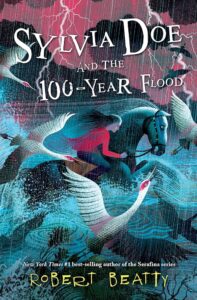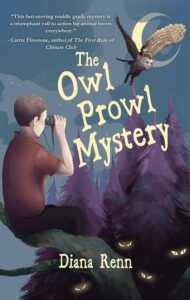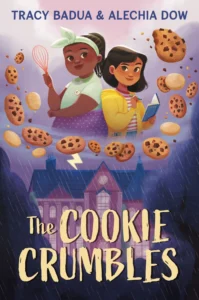Sylvia Doe doesn’t know where she came from or who her parents were. All she knows is she would rather stay at the Highground Home for Children, where she can tend horses and be surrounded by nature, than live in a foster home in the city. So she keeps running away from new placements to find her way back.
After Sylvia escapes one time too many, the authorities want to put her in a secure facility. An epic flood disrupts those plans and brings unexpected things riding the current of the local river. When Sylvia rescues a near-drowning boy from the water, the two set off on a journey to discover where he belongs and stop the cause of the flooding. Along the way, they both learn more about themselves and how to get back home.
Sylvia Doe and the 100-Year Flood by Robert Beatty is a tale of adventure, courage, and self-discovery. Sylvia and Jorda (the boy she saves), must face their fears over and over again as they continue their quest. Along the way they discover that Jorda comes from the past, and so do the creatures washed out by the flood. But they’re not sure if they can figure out how to get him home and find a place where Sylvia belongs, too.
Touted as a nature-based mystery-adventure, Sylvia Doe and the 100-Year Flood moves at a fast pace. Sylvia’s bond with the horses, and with a caretaker at Highground, are touching. And her observations about nature and wildlife through the ages could inspire young readers to pay more attention to the world where they live. Her growing feelings for Jorda make their quest more complicated.
The descriptions of how Sylvia and Jorda navigated the water sometimes got confusing, and they spent a lot of time fighting the water. But I expect that young readers aged 9 to 12 will be intrigued by both the mystery and adventure enough that any confusions won’t bother them.
The publisher provided a copy of this title in exchange for my honest review.









